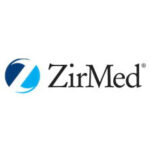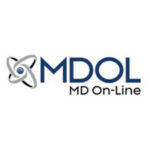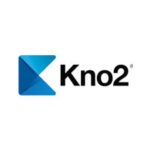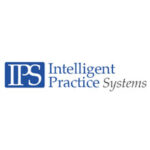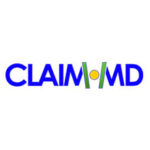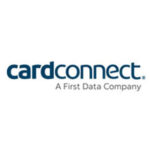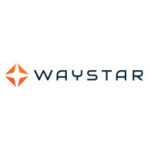That therapists are required to accurately document patient visits to support medical necessity of therapy and ensure there are no slip-ups in getting reimbursed by payers is well known. Clearly, documentation is not something that therapists look forward to! The PT EMR should help by making this task simpler and less onerous through best practices that are incorporated.
Here are some best practices that should make documentation more complete and accurate and less of a challenge.
Assign, Track Tasks That Matter To The Patient And Practice
The dashboard is where it all begins. Assigning tasks to oneself or to others (marking those with primary and secondary responsibility for the task) could be a place to get started, and the tasks would acquire the specific patient context (when the task is related to a patient) that could be tracked for progress and marked as complete when done.
Manage Notes, Review Charges Right From The Appointments
When it comes to appointment management, therapists have the option of performing ?light touch? appointment management while the front desk would carry out full, detailed appointment management. Notes for the day would be accessible right from the appointment in the scheduler. Alternatively, notes would be reachable from the dashboard. The list of appointments would show appointment status, number of visits, status of documentation, and charges. Reviewing missing charges and unsigned notes is a useful practice. For example, there could be an arrived appointment without finalized documentation. Or sessions that are missing charges.
Institute Patient Information Card To Preview Critical Items Before The Visit
A key item on the documentation page is the patient information card/summary. This would include items like previous notes, specialty, expiration date of authorization, number of visits remaining, number of clinical or administrative authorized units, and date of last progress note. Also listed should be any certifications that are required along with warnings like authorizations that are expiring, progress notes due, and certifications outstanding. Any required items if missing should prevent the note from being signed. Looking at the card before starting the visit is recommended.
Set Up Robust, End To End Documentation Process
The broad process that unfolds is the creation of the note followed by capture of charges and selecting of goals, and culminates in finalizing the note. Next would be to select the type of note for the day. This would typically start as the initial evaluation or daily note depending on whether the appointment selected is an initial appointment or follow up visit. Next would be to select the documentation template for the discipline from the clinical library. It should be possible to copy forward the entire note or any of its sections from the previous date of service along with charges when documenting a new session. In this case the template would get automatically copied.
Signing the note would finalize the encounter. Then on to the next note. Sending the intake questionnaire to the patient beforehand through the patient portal and importing it through the note/documentation is something to do before completing remaining documentation. Setting reminders from the notes page is another best practice.
Check Charges Generated Before Signing Off On The Note
A big part of documentation would be scoring tables for standard tests to transcribe outcomes into documentation. Another would be entry of diagnosis codes. Last but not least would be adding charges and goals. Charges would be auto populated based on procedures/CPT codes selected, units would be automatically calculated for timed codes.
Document Goals On Every Encounter
A full list of goals is defined on the initial eval. Progress on goals is documented on daily notes by carrying forward goals progress from the last session and making updates. Documenting progress toward goals on each visit on the daily note is key so that it would be possible to review history of progress on each goal in the future. Goals would be added from a goal bank or custom goals could be created as well. Goals are broken down by specialty. There could also be personal favorite goals for each individual therapist.
Set Up Progress Notes For Care And Compliance
When it comes to progress notes (similar to a reevaluation), the areas would include reviewing where we began with standardized tests and scores, redoing tests where needed, and comparing the difference. This could be started by rolling forward the previous progress note. The first progress note will copy forward the previous evaluation. And then updating the progress note. Previous standard test scores could be copied forward. Goals status would be either ?met goal? or ?progressing on goal? or ?discontinued goal.? Goals that are met or discontinued would not show up on the next appointment, instead they will be archived.
Bring Assistants And Uncredentialed Therapists Into The Loop
Assistants would mark notes as ready to review and the notes would be pushed into the supervising therapist?s work queue to sign off. The same process would operate for therapists who are not credentialed with a particular payer, and the note would be signed by the therapist it is being billed under. The yet to be credentialed therapist could sign off on the note or mark it as ready to review, and it will be billed with charges under the credentialed therapist/supervising therapist.
Discharge Patients Correctly And Fully
The final step is discharging patients. Previous daily notes or progress notes could be copied forward to create the discharge note. Deleting any appointments where the patient hasn?t arrived and with no notes or future appointments cleans up the database. The date of discharge would be set in the system. Good discharge management is an important best practice. Running reports will help manage the discharge process for example patients who aren?t discharged but don?t have appointments scheduled, those who are slipping through the cracks. It should also be possible to discharge patients right from the patient record, these would be absentee discharges, discharging them without creating formal discharge notes.
Documentation is one of those tasks that is widely disliked but difficult to avoid. Best practices in the PT EMR should make documentation less of a chore and more streamlined.









